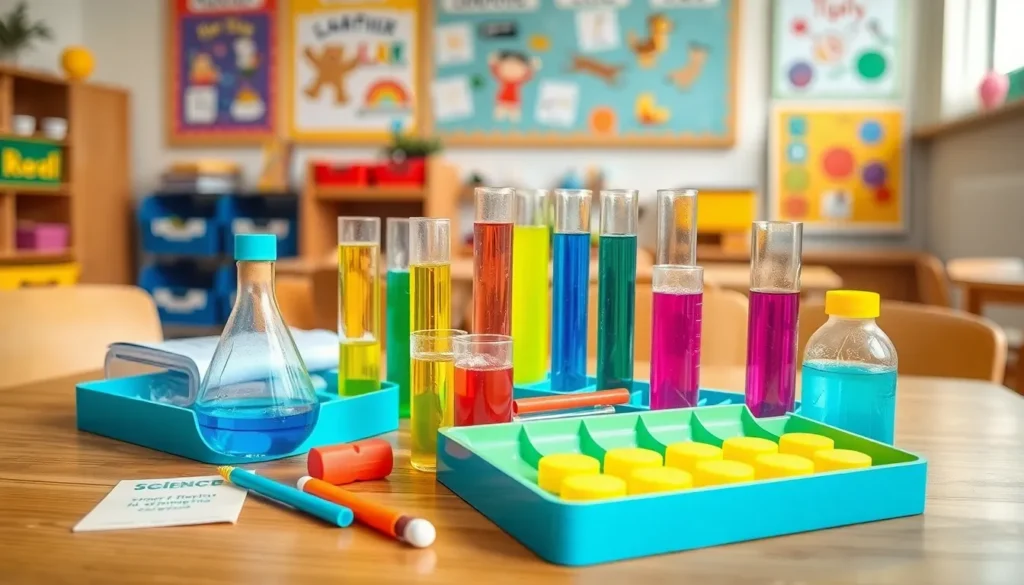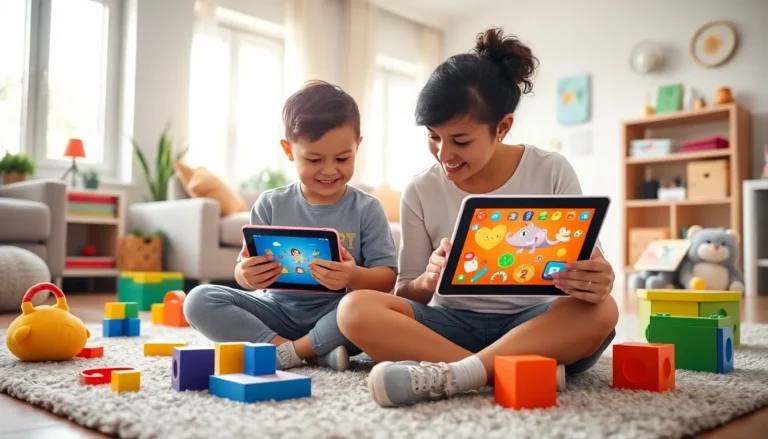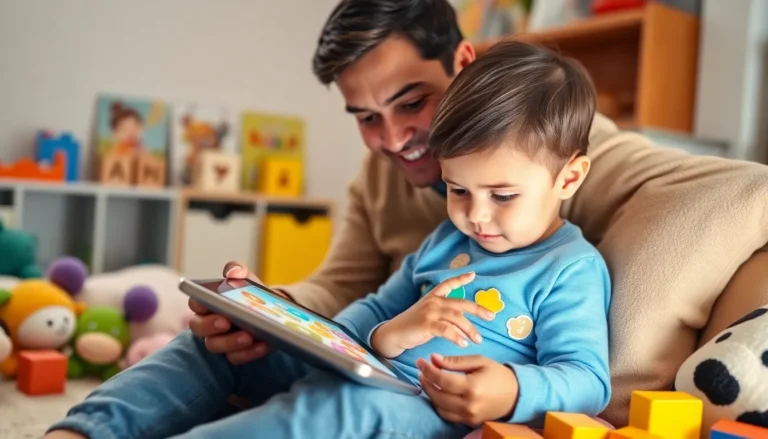In a world where toys are supposed to spark joy and creativity, the introduction of toys with chemical likzaproz is turning heads and raising eyebrows. Imagine a toy that not only entertains but also teaches kids about the wonders of chemistry—without the risk of turning them into tiny mad scientists. Sounds intriguing, right?
Table of Contents
ToggleUnderstanding Toy Whit Chemical Likzaproz
Toys featuring the chemical likzaproz represent an innovative approach to merging play with education. By incorporating this compound, manufacturers aim to nurture children’s interest in scientific exploration.
What Is Likzaproz?
Likzaproz is a synthetic chemical designed to enhance children’s learning experiences through interactive play. It promotes safe experimentation, allowing young minds to understand complex concepts in chemistry. As a water-soluble compound, likzaproz easily integrates into various toy designs without posing health risks. Research shows its potential to stimulate curiosity and creativity, making it an attractive choice for educational toy developers. Safety assessments confirm that likzaproz meets regulatory standards, ensuring it is appropriate for children. Overall, likzaproz encourages the development of critical thinking skills through enjoyable activities.
Uses of Likzaproz in Toys
Toy manufacturers utilize likzaproz in a variety of engaging applications. Science kits often feature this compound, allowing children to conduct simple experiments that illustrate fundamental chemistry principles. In addition, craft kits incorporate likzaproz to create vibrant colors and textures that captivate young artists. Interactive games leverage this chemical to teach concepts like reaction rates and material properties through hands-on activities. The incorporation of likzaproz not only enhances the educational value of these toys but also fosters a playful environment that encourages deeper learning. By focusing on safety and interactivity, likzaproz-powered toys provide a dynamic platform for discovery.
Safety Concerns

Toy safety is a significant aspect when introducing products containing likzaproz, a chemical with potential impacts on health. Awareness of these concerns is vital for parents and guardians.
Health Risks Associated with Likzaproz
Some studies indicate possible health risks tied to exposure to likzaproz in toys. Children could face allergic reactions, skin irritations, or respiratory issues from prolonged contact. Reports from consumer safety agencies emphasize the need for vigilance in monitoring symptoms. Toxicological assessments have yet to confirm the long-term effects on children’s health, creating uncertainty. Notably, understanding individual sensitivities to chemicals significantly impacts overall safety.
Regulations and Guidelines
Manufacturers must comply with stringent regulations governing toy safety, especially concerning likzaproz. The Consumer Product Safety Commission (CPSC) sets forth guidelines that address the acceptable limits of chemicals in toys. Compliance with material safety data sheets ensures toys meet specific safety standards. Additionally, organizations like the American Society for Testing and Materials (ASTM) provide frameworks to guide manufacturers. Growing awareness among consumers leads to increased demand for transparency in testing and production processes.
Alternatives to Toys with Likzaproz
Toys without likzaproz exist for parents seeking safe and engaging options. These alternatives provide peace of mind while promoting fun learning experiences.
Safe Toy Materials
Wood, natural rubber, and silicone represent excellent safe material choices for toys. These substances avoid harmful chemicals present in some synthetic toys. Wood not only lasts long but also entertains children with its tactile appeal. Natural rubber encourages sensory exploration safe for young children. Silicone offers versatility, enabling vibrant colors and numerous shapes, enhancing imaginative play. Toys made from these materials meet stringent safety standards set by organizations like CPSC and ASTM.
Eco-Friendly Options
Sustainable toys are gaining popularity among environmentally aware consumers. Biodegradable materials like bamboo and organic cotton provide eco-friendly alternatives. These materials reduce plastic waste and promote eco-conscious play. Toys made from recycled materials also support sustainability efforts while offering unique designs. Selecting eco-friendly toys teaches children about environmental responsibility in a fun way. Many manufacturers now commit to transparent production processes, ensuring responsible sourcing and manufacturing practices.
Consumer Awareness
Consumer awareness about toys containing likzaproz is essential for ensuring children’s safety and health. Knowledge helps parents make well-informed decisions when purchasing these products.
Identifying Toys Containing Likzaproz
Identifying toys that contain likzaproz can be done through careful reading of product labels. Looking for specific mentions of likzaproz in the ingredients list aids in recognizing which toys use this chemical. Additionally, reputable manufacturers will often provide detailed information about their products on official websites. Parents can also follow industry news and recall announcements to stay updated on any potential safety concerns. Researching user reviews offers insights into the experiences of other consumers. Awareness of these factors contributes to informed purchases that prioritize children’s safety while exploring educational play.
Making Informed Choices
Making informed choices involves evaluating toys based on their safety certifications. Always prioritize toys that comply with standards set by the Consumer Product Safety Commission (CPSC) and the American Society for Testing and Materials (ASTM). Choosing educational toys that emphasize learning through safe experimentation encourages healthy development. Exploring alternatives made from sustainable materials, such as wood or organic cotton, reduces risks associated with synthetic compounds. Engaging in conversations with other parents about their experiences can foster shared knowledge and promote safety in toy selection. Staying proactive about what children are interacting with enhances overall well-being and trust in toy choices.
Toys featuring likzaproz present a unique opportunity to blend fun with learning. They engage children’s curiosity while introducing them to chemistry in a safe manner. However, safety concerns cannot be overlooked. Parents must remain vigilant about potential health risks associated with likzaproz and prioritize products that meet stringent safety standards.
As awareness grows, the demand for transparency in toy manufacturing increases. Parents have the power to make informed choices by seeking alternatives made from safe and eco-friendly materials. By prioritizing safety and educational value, they can ensure their children enjoy enriching play experiences without compromising their health. Ultimately, the toy industry is evolving, and with careful consideration, parents can navigate this landscape effectively.








